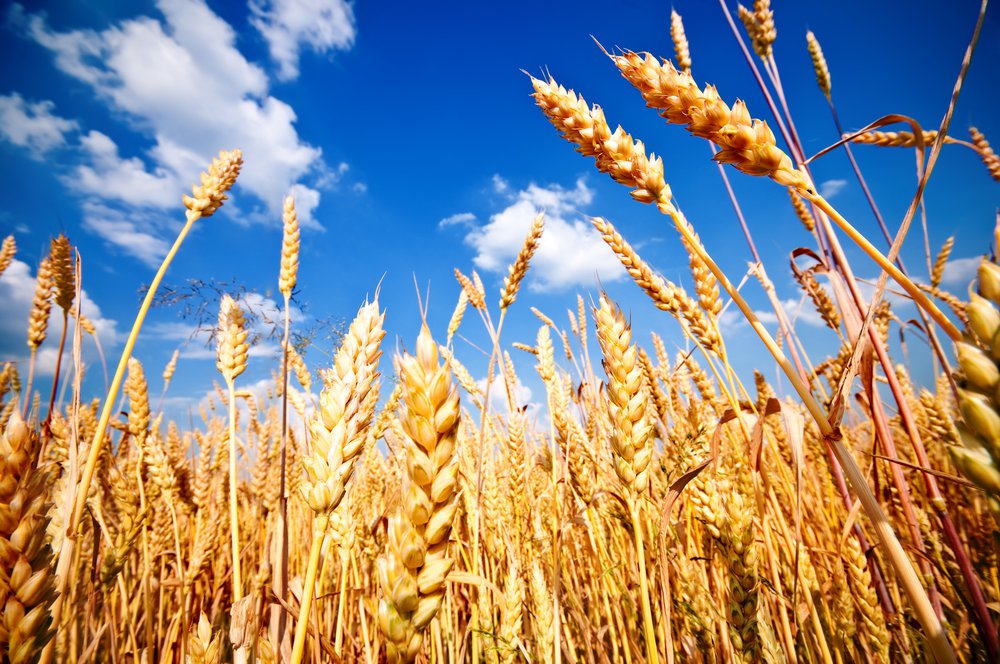Hungry for more
August 24, 2018 | Expert Insights

China’s growing hunger for wheat pushes global reserves to crisis levels, as heat waves and droughts hit harvests.
Background
Global warming or climate change is the increase in the average temperature of the Earth’s climate system - largely attributed to the excess presence of greenhouse gasses released from human activity. It is generally attributed to a century-scale, implying there needs to be a steady rise in temperatures over a century or more, for the phenomenon to be classified as climate change.
The average temperatures have been on the rise for the past six years, with 2016 being the hottest year on record. In 2013, the Intergovernmental Panel on Climate Change (IPCC)’s Fifth Assessment Report concludes that it was extremely likely that human influence has been the dominant cause of climate change observed since the mid-20th century.
The World’s most populated country is facing a severe side effect of rising global temperatures: reduced crop yields. China’s wheat consuming is outstripping global supply and reserves, largely due to the reduced yields from Eastern Europe and Asia.
The global wheat industry faced a starkly similar situation in 2008, when a drought in Russia drastically reduced wheat exports. Egypt, which imported wheat in large quantities from Russia, subsidised wheat for its citizens and was unable to provide a staple foodstuff to its people. The Egyptian government faced an unrest which eventually culminated in the 2011 Arab Spring.
Analysis
Although global stocks are expected to hit an all-time high of 273 million tons at the start of the 2018-19 grain marketing season, according to U.S. Department of Agriculture estimates, the problem is that nearly half of it is in China, which is not likely to release any onto global markets.
Experts predict that by the end of the season, the eight major exporters will be left with 20 percent of world stocks — just 26 days of cover — down from one-third a decade ago.
The USDA estimates that China, which consumes 16 percent of the world’s wheat, will hold 46 percent of its stocks at the beginning of the season, which starts around now, and more than half by the end.
The 126.8 million tons China is estimated to hold is up 135 percent from 54 million five years earlier.
A repeat of the 2007-08 crisis, which forced many countries to limit or ban exports, is less likely in the absence of other drivers seen at that time, which included $150-per-barrel crude oil. The recent three-year high for wheat prices of $5.93 a bushel on the Chicago Board of Trade pales in comparison to the high of $13.34-1/2 a bushel in February 2008
Importers in North Africa also appear to be better placed this time, with higher stocks of their own. “It could have an impact on food inflation but in North African countries they have a good crop this year, fortunately, so their reliance is not as big as in the past years,” said Abdolreza Abbassian, chief economist at the United Nations’ Food and Agriculture Organization (FAO)
China started stockpiling wheat in 2006, setting a guaranteed floor price to ensure food security and stability.
Government wheat reserves now total nearly 74 million tons, according to Shanghai JC Intelligence Co. Ltd, most of it from 2014-2017 but a small amount could be from as early as 2013.
Sylvia Shi, analyst at JC Intelligence, said China would continue to import wheat it cannot produce in sufficient volumes to help meet a growing appetite for high-protein varieties, for bread and other baked products as diets become Westernized.
Wheat crops in several of the world’s biggest exporters — Argentina, Australia, Canada, the European Union, Kazakhstan, Russia, Ukraine and the United States — have suffered this year.
A spring drought in the Black Sea bread baskets Russia and Ukraine was swiftly followed by a summer heat wave in the European Union. Dry weather now also threatens crops in another important exporter, Australia.
Evidence of the serious harm done has grown as harvesting progresses.
Forecasts for the 28-member European Union have repeatedly been cut, with Germany set for its lowest grain harvest in 24 years after crops wilted under the highest summer temperatures since records began in 1881.
Russia’s agriculture ministry held a meeting with grain traders on Friday to discuss export volumes.
The ministry denied export limits were discussed but traders, some of whom were at the meeting, said curbs might be imposed later in the season following complaints from domestic meat producers about the rising cost of animal feed.
The United States is best placed to capitalize on a shortfall in global supply, with much higher stocks than rival exporters and rising production.
The outlook provides a much-needed boost for U.S. farmers caught in the crossfire of a trade war with China — a huge importer of U.S. soybeans and corn — as well as Mexico and Japan, two of the top buyers of U.S. wheat.
Assessment
Our assessment is that the increase in temperatures will result in greater disruption of basic services, food stocks and access to portable water. We believe that the common temperature reduction target agreed in the Paris Agreement is a goal that all countries should reaffirm to achieve in their respective deadlines. Reduced crop yields are only a side-effect of larger series of events which will disrupt human life, and the heat waves this year are a sign of the rising intensity of global warming.








Comments